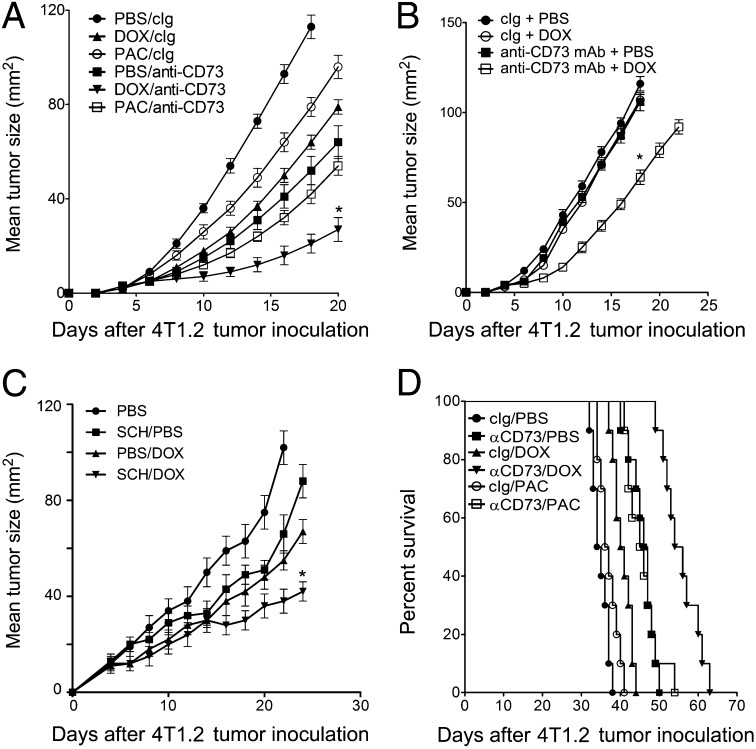Fig. 4.
Targeted blockade of CD73 enhances DOX activity in vivo. (A) Wild-type and (B) SCID BALB/c mice were injected subcutaneously with 2 × 105 4T1.2 tumor cells and treated on day 3 and day 10 with PBS, DOX (2 mg/kg, i.v.) or PAC (10 mg/kg, i.p.), or on days 3, 7, 10, and 14 with anti-CD73 mAb (100 µg, i.p., clone TY/23) or control Ig (100 µg, i.p., clone MAC4). Means ± SEs of five mice per group are shown (*P < 0.05 by Mann–Whitney test, compared with monotherapy). A representative of two experiments is shown. (C) BALB/c mice were injected subcutaneously with 2 × 105 4T1.2 tumor cells and treated on day 3 and day 10 with PBS or DOX (2 mg/kg, i.v.) or SCH58261 (1 mg/kg, i.p., twice weekly). Means ± SEs of five mice per group are shown (*P < 0.05 by Mann–Whitney test, compared with monotherapy). (D). Fifty-thousand 4T1.2 tumor cells were inoculated into the mammary fat-pad of wild-type BALB/c mice (n = 8 per group), primary tumors were surgically removed on day 25 and mice were treated with DOX (2 mg/kg, i.v.) or PAC (10 mg/kg, i.p.) on day 28 and 35 or anti-CD73 mAb (100 µg, i.p., clone TY/23) on days 28, 32, 36, and 40. Significance of differences in survival between groups is estimated by log-rank (Mantel–Cox) test (P < 0.0001).

